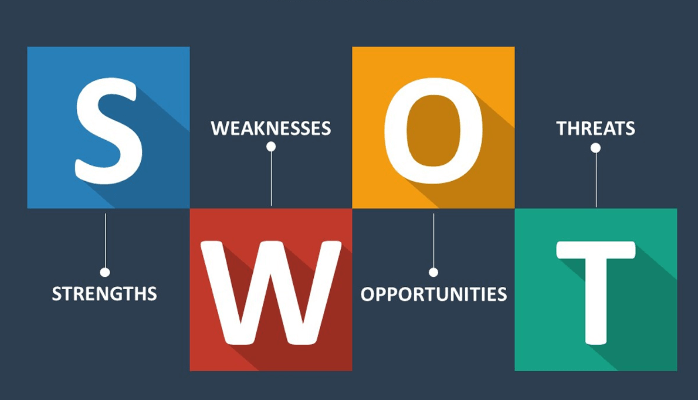Online, the competitive analysis part is a little different than offline, because online is much more transparent and has many more analysis tools that can help you understand how the competition is promoting and what development strategies they are applying.
Moreover, on the Internet, it is much easier to compare prices and see real feedback for a product or service. So let's learn how to do a proper competitive analysis in the virtual environment.
Why should you do competitive analysis in the virtual environment?
- For strategic decisions – you adapt to the market and identify growth potential.
- You reduce the costs - this is how you spot savings opportunities.
- Increase sales and profits - you can optimize prices and identify new trends.
- You minimize risks – you are connected to market changes, and you can take a stand quickly.
Here's what you can understand when you carefully analyze your online competitors:
- What is their promotion strategy - what communication channels have they chosen, what messages do they send to the target audience, what communication policies do they embrace, but also how do they convince their audience, through B2B or B2C messages?
- Sites they are promoting on - here are 2 useful tools to spy/analyze how your competitors are promoting:
- Similarweb: displays estimated traffic volumes, site ranking by industry and country, traffic sources for sites, keywords found by target audience in search engines, country of origin of site visitors -, how much time they spend on the site, etc.
- SEMRush: displays search engine positions, how much traffic they get from these positions, competitors, paid advertising, and backlinks. - The most prolific keywords for them in SEO and Google Ads. Plus, possible mistakes made by them when promoting with Google, which you can avoid - you can analyze the feedback received by them on Social Media and Google My Business, to understand what is not going well in their way of operation and to do better.
How does the correct definition of online competition take place?
In the virtual environment, your competitors may be more numerous and different than offline. Because on the Internet, visible brands have weight and significance, with a presence in the search engine charts, with engagement and followers on social networks, and with constant and qualified traffic on the website. So these are the channels that need to be analyzed to understand your online competition.
Our recommendation is to report to 4-5 direct, top competitors - the most relevant, as well as those offering alternative products/services. The next step would be to do a SWOT analysis compared to them.

After understanding your weak points and the risks you face, we recommend you take action to improve everything you can. You can for each weak point find ways to improve things and determine a person responsible in the company to implement these changes. For each risk, you must write procedures and explanations for their correct management.
Afterward, go ahead and study the competitor's ads:
- This is where you enter Facebook Ads to do the analyses: facebook.com/ads/library.
- Here you enter LinkedIn ads to do the analyses:

It is also very important to understand how well your competitors are doing on SEO:

Here are the SEO metrics it's good to analyze
- Domain Authority - a score from 1 to 100 - represents the ranking ability of the site based on the PageRank algorithm (https://en.wikipedia.org/wiki/PageRank); this metric is calculated according to combinations of your site's metrics, such as the total number of links to your site, number of sites linking to your site, their quality/authority, etc. The authority determines the competitiveness of the website and shows, in an estimative way, the effort required by the SEO team for a high ranking.
- The SPAM score indicates, in a rough way, the chance of the site being penalized by Google.
- No. of total links - the approximate number of links that the team must create, must reach the level of competitors (indicated in the table). From an SEO point of view, only DoFollow links matter, but NoFollow links are also important, in that they indicate site activity, plus they are a potential source of traffic.
Questions that matter when analyzing your competition's online assets:
- What does the competitor's website look like?
- Does it have a dedicated and complete "about" page?
- Does it have a clear return policy?
- Is there a FAQ page?
- What is the tone that he communicates with his clientele?
- Do they have reviews on Facebook and Google My Business?
- What do customers like about the way the competition operates?
- What do customers not like?
- Do they have a chat on the website?
- How quickly does the competition respond to messages?
- Do you like their posts?
- How often do they do contests and giveaways? Are they impactful?
- What actions does the competitor encourage?
- What methods of persuasion do they use?
Now you're ready to articulate what your brand/unique offering is all about.

Competitive advantage refers to the factors that enable a company to produce goods or services better, or cheaper, than its rivals. You have to find only one competitive advantage (the strongest and best for your company) so that:
- You simplify the perception of the target audience.
- Your business occupies a clear place in the minds of consumers.
- You make competition irrelevant.
To analyze how visitors behave on your website, we recommend https://www.hotjar.com. Here's how it works:
Books/inspiration for defining your unique business offering:
- Blue Ocean Strategy: How to Create Uncontested Market Space and Make Competition Irrelevant - Kim, W. Chan
- The 22 Immutable Laws of Marketing - Al Ries, Jack Trout.
